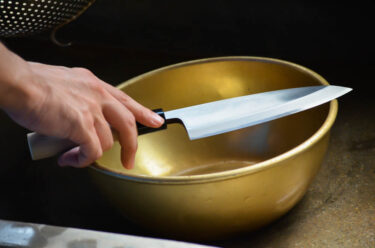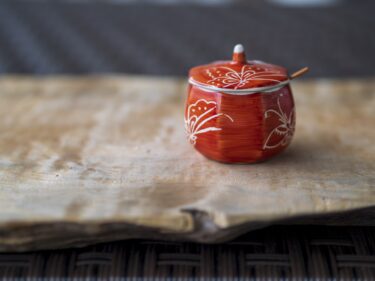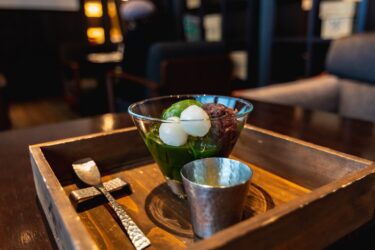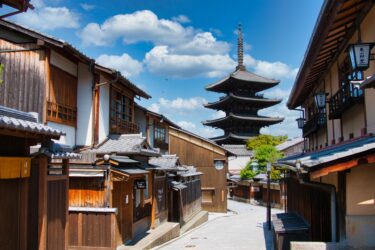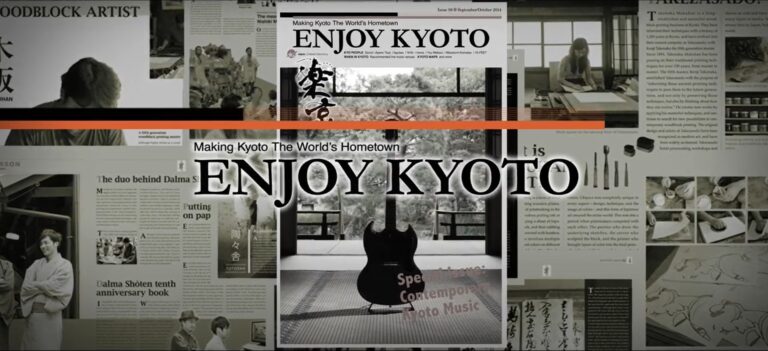Japan has gained something of a reputation for its fine cutlery. You’ve seen it in the butter smooth slicing of your sashimi, and the decoratively carved vegetables that often garnish plates here. So with a reputation for quality cutting instruments, it’s no surprise that many visitors to Japan are interested in picking up a beautiful Japanese-made knife for themselves.
In the ancient city of Kyoto, centuries-old traditions of meticulous craftsmanship live on, and the precision of Japanese knives is just such a one. You can find exquisite blades crafted with an incredible level of skill and attention to detail at a number of shops in the city, but if you’re not quite sure where to start, we have a brief guide to help you familiarize yourself with Japanese cutlery.
Whether you’re a culinary enthusiast looking to enhance your kitchen or simply appreciate the beauty of fine craftsmanship, the unparalleled sharpness and durability of the traditional Japanese knives you’ll find in Kyoto makes them a joy to use in the kitchen.

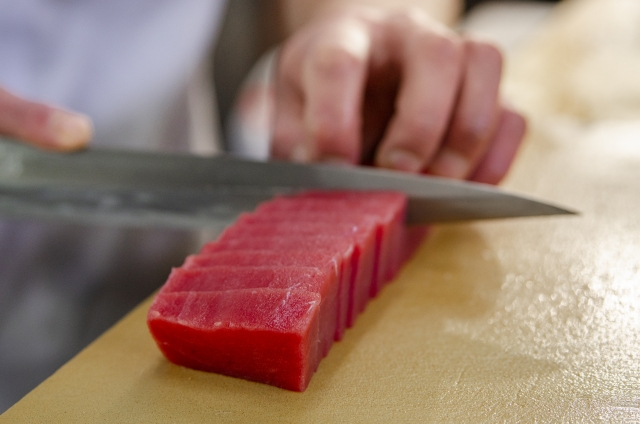
History and Tradition of Kyoto Knives
Kyoto’s rich cultural heritage historically made it a beacon for the most skilled craftsmen of all types, and knifesmithing was no exception. Japan’s most famous cutting instruments are of course those worn by its samurai in ages past: katana and other swords of various different lengths. Though knives of various lengths and purposes have been forged throughout much of Japanese history, during the relative peace of the mid-Edo period (1603-1868), a greater variety of knives for culinary purposes were developed and became more broadly used, including some of the types that are most popularly used today.
A shockwave was sent through the smithing world and beyond in 1876, when Japan’s Meiji government issued the Haito, or Sword Abolishment Edict: in an effort to defang Japan’s samurai class, swords were not permitted to be carried in public. Those who did anyway would have their swords confiscated. This edict meant that some swordsmiths had to shift their businesses to produce other types of knives instead. In fact, this was the case for the Kyoto knife shop, Aritsugu.
The art of knife-making in Kyoto has been passed down through generations, with each master craftsman training their apprentices in the ancient techniques and secrets of the trade. These techniques have remained largely unchanged over the years, preserving the authenticity and integrity of knives in some of Kyoto’s oldest shops.
What sets Japanese knives apart?

You’ve probably heard that Japanese knives are supposed to be “excellent” and “high quality,” but what exactly does that mean? What makes them different from other cutlery around the world?
Material
Japanese knives like those you’ll find in Kyoto’s traditional shops are made of steel like many other kitchen knives around the world, but these traditionally contain a higher carbon content (though stainless steel versions exist), making the steel harder, and allowing for exceptional sharpness. This does mean these knives require some delicacy to handle, though–the harder steel is less flexible and therefore easier to break or damage. Handle yours with care, though, and this shouldn’t be a problem.
Cutting and Sharpening Angle
The cutting angle of a Japanese knife is another point of distinction. This refers to the angle at which the blade sharpens to a point, and this angle is typically much smaller (making for a leaner blade as it sharpens to a point) in Japanese knives. This point also means that Japanese knives can’t be sharpened like your other kitchen knives: you’ll want to use a whetstone on both single- and double-beveled knives. You can find an appropriate whetstone at traditional knife shops in Kyoto.
Thickness
Japanese knives are typically thinner on top than their Western counterparts. This makes for less resistance while cutting, but also means you’re probably better off using these knives for more delicate cutting tasks to avoid damaging them.For the enthusiasts, there are also a number of different finishes to look into, some of which provide utility when cutting, like tsuchime, or hammered blades that prevent suction; or the swirling, water-like patterns of Damascus steel (suminagashi), which includes multiple types of metal.
Types of Japanese Knives and Their Uses

Japanese knives come in a variety of shapes and sizes, each designed for specific culinary tasks.
Gyuto: The Gyuto is the Japanese equivalent of a Western chef’s knife, featuring a curved blade and a pointed tip. It’s a versatile knife suitable for a wide range of kitchen tasks, including slicing, dicing, and chopping. This is perhaps the most versatile and widely used Japanese knife, serving as the go-to knife for many chefs for a wide range of tasks.
Santoku: The Santoku is known for its versatility, making it a popular choice for home cooks. Its name translates to “three virtues,” referring to its ability to slice, dice, and chop various ingredients. Known for its versatility, the Santoku is a popular choice for home cooks and professional chefs alike.
Yanagiba: This long, thin knife is specifically designed for slicing raw fish for sashimi and sushi. Its single-edged blade enables clean, precise cuts to preserve the integrity and delicate texture of the fish. The Yanagiba is a knife you’ll see most often in sushi restaurants.
Deba: This knife is characterized by its thick, heavy blade, which is designed to easily cut through fish bones and tough skin. While less common in home kitchens, the Deba is essential in professional kitchens, particularly for butchering and fileting fish.
Usuba: The Usuba is a traditional Japanese vegetable knife with a thin, flat blade. Its sharp edge allows for precise cuts, making it ideal for creating intricate vegetable garnishes.
Nakiri: Similar to the Usuba but with a double-edged blade, the Nakiri is primarily used for cutting vegetables. Its flat edge makes it easy to chop vegetables with a push-cut motion.
Kaisaki/Petty: The Kaisaki is a small utility knife that’s perfect for intricate cutting tasks, such as peeling fruits and vegetables, deveining shrimp, and creating decorative garnishes.
If you’re feeling overwhelmed about which knife to choose, not to worry. For most cooking needs, a Santoku or Gyuto is a sensible choice. If you’re unsure, though, or interested in the applications of the others, ask at the shops of Kyoto’s knife craftsmen. Some have English-speaking staff on hand to help explain some of these details, or if you’re lucky, you might even great to speak with the craftsman himself.
Famous Kyoto Knife Makers and Where to Buy Kyoto Knives
Kyoto knives are highly sought after by both professional chefs and culinary enthusiasts worldwide. While visiting Kyoto provides the opportunity to purchase these knives directly from the craftsmen, there are also reputable online retailers that offer a wide selection of Kyoto knives. If you’re visiting a shop in Kyoto, you won’t want to miss these master Kyoto knife craftsmen.
Aritsugu
Located in downtown Kyoto’s famous Nishiki Market, this shop dates back to 1560, when its main business was in sword making. Nowadays, Aritsugu is often thronged with Japanese kitchenware enthusiasts coming to see its impressive array of knives, and it’s no wonder why.
See it on Google Maps.
Shigeharu
Shigeharu is in a quiet neighborhood, a few blocks south of Nijo-jo Castle. It has no website, and opening days are irregular, but if you can get in a visit to this ancient Kyoto knife shop, it’ll be well worth your while. Shigeharu is not only Kyoto’s oldest knife shop, but it ranks among the oldest shops in Kyoto, period. It’s the knifesmith himself who mans this shop, and while you’ll do better if you can visit with a Japanese-speaker, it’s an unmatched opportunity to purchase a Kyoto-made knife from the artisan himself.
See it on Google Maps.
Care and Maintenance of Japanese Knives

To ensure the longevity of a Japanese knife, proper care and maintenance are crucial. After each use, the blade should be carefully cleaned and dried to prevent corrosion. Many Japanese knives have wooden handles, which you may also want to oil after use.
Regular sharpening is essential to maintain the knife’s edge. Kyoto knife makers may offer sharpening services and can provide guidance on how to sharpen the blades properly with a whetstone.
Final Thoughts
The art of knife-making in Kyoto is a testament to the power of tradition and craftsmanship. Each knife is a reflection of centuries-old techniques and a deep respect for the materials used. From the meticulous forging process to the exquisite designs of the blades, Kyoto knives embody the art of precision. Whether you’re a professional chef or a home cook, a knife from Kyoto is a tool that will elevate your culinary experience–and certainly provide a story or two!


